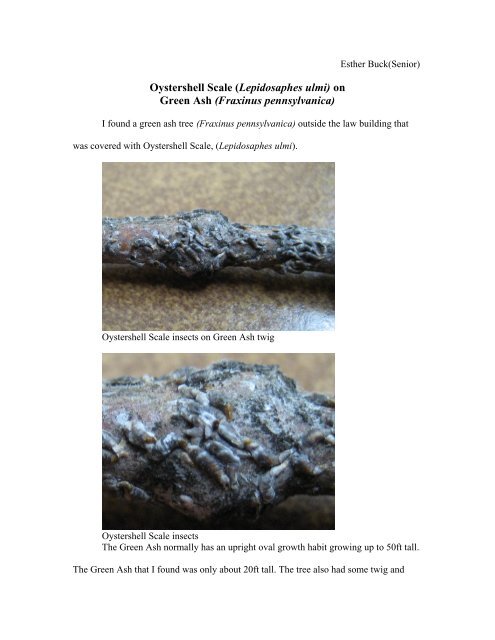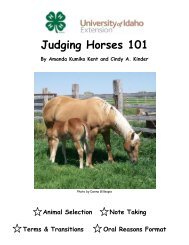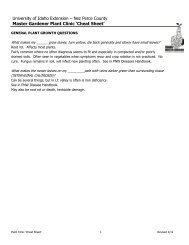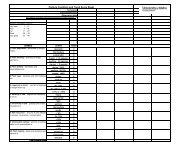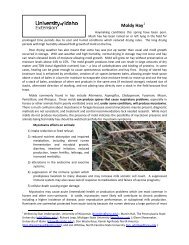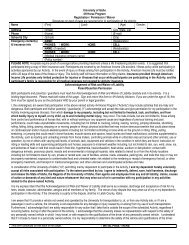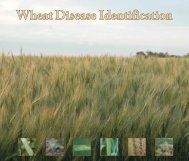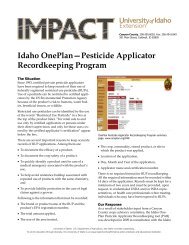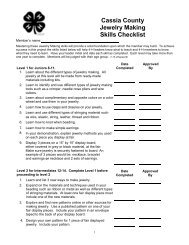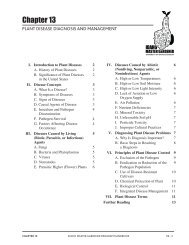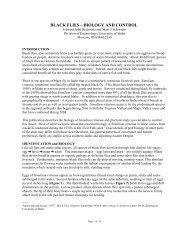Oystershell Scale (Lepidosaphes ulmi) - University of Idaho ...
Oystershell Scale (Lepidosaphes ulmi) - University of Idaho ...
Oystershell Scale (Lepidosaphes ulmi) - University of Idaho ...
You also want an ePaper? Increase the reach of your titles
YUMPU automatically turns print PDFs into web optimized ePapers that Google loves.
<strong>Oystershell</strong> <strong>Scale</strong> (<strong>Lepidosaphes</strong> <strong>ulmi</strong>) onGreen Ash (Fraxinus pennsylvanica)Esther Buck(Senior)I found a green ash tree (Fraxinus pennsylvanica) outside the law building thatwas covered with <strong>Oystershell</strong> <strong>Scale</strong>, (<strong>Lepidosaphes</strong> <strong>ulmi</strong>).<strong>Oystershell</strong> <strong>Scale</strong> insects on Green Ash twig<strong>Oystershell</strong> <strong>Scale</strong> insectsThe Green Ash normally has an upright oval growth habit growing up to 50ft tall.The Green Ash that I found was only about 20ft tall. The tree also had some twig and
anch dieback. The overall health <strong>of</strong> the plant was fair, it was on the shorter side and didhave some dieback but it looked like it could last for a while longer.The dwarfed growth and dieback <strong>of</strong> branches and twigs was probably a result <strong>of</strong>the high infestation <strong>of</strong> <strong>Oystershell</strong> <strong>Scale</strong> (<strong>Lepidosaphes</strong> <strong>ulmi</strong>) insect on the branches <strong>of</strong>the tree. <strong>Scale</strong> insects feeding on plant sap slowly reduce plant vigor, so I think thissample may have been shorter due to the infestation <strong>of</strong> <strong>Scale</strong> insects. As with this tree,heavily infested plants grow poorly and may suffer dieback <strong>of</strong> twigs and branches. Aninfested host is occasionally so weakened that it dies.The scale insects resemble a small oyster shell and are usually in clusters all overthe bark <strong>of</strong> branches on trees such as dogwood, elm, hickory, ash, poplar, apple etc.The <strong>Oystershell</strong> <strong>Scale</strong> insect has two stages, a crawler stage, which settles after afew days. Then the insect develops a scale which is like an outer shell, which is usuallywhat you will see on an infested host. The scales are white in color at first but becomebrown with maturity.There are a couple controls for <strong>Oystershell</strong> <strong>Scale</strong>. There are natural enemies likeparasitic wasps and predators such as ladybugs. <strong>Scale</strong> insects are generally controlled bythese enemies, but sometimes more treatment may be needed. Dormant oil treatments canbe used and are applied in late winter through early spring before bud break.Horticultural oil, which is a different type <strong>of</strong> oil product, can be applied in the summer.Make sure to check the labels because some species may be sensitive to this treatment.There are other insecticides such as insecticidal soaps which can be used against thecrawler stage, but are ineffective on the adult stage which have a waxy covering thatprotects them. There are also a few pesticides that can be used against the crawler stage
<strong>of</strong> osyterscale in mid-May. Examples are: Isotox, Orthene and Orthorix, and forcommercial use: Guthion, Sniper and Dursban. To prevent damage from scale insects,you must maintain healthy, vigorously growing trees, monitor insect populations, and usecorrect control methods in a timely manner.Works CitedDay, Eric. "<strong>Oystershell</strong> <strong>Scale</strong>." Virginia Coorperative Extension. August 1996. VirginiaState <strong>University</strong>. 14 Nov 2007.<strong>Scale</strong> Insects Fact Sheet. June 1999. <strong>University</strong> <strong>of</strong> Rhode Island Horticulture Program. 14Nov 2007 .


